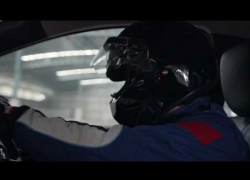Everywhere you go in the world, you’ll notice that there are always local variations to suit the culture. For example, slurping your soup may be considered rude in England, but polite in Japan. Or showing the palm of your hand to someone in America usually means “No more” while in Greece, it is considered to be quite offensive. And that’s just wonderful. It is what makes travel so appealing.
But the problem here in the Philippines is that we tend to take creative or cultural license with things like the law. Or for the sake of this article, road rules. And it has created a situation where many drivers are now guilty of something even worse than breaking the law, and that is being ignorant (or in many cases arrogant) of it.
So, in no particular order, and no offense meant to those who may be innocently guilty of one or two, I present you with my top 5 bad habits that many Pinoy drivers have been doing so long that they no longer realize it’s wrong.
1) Turning Hazard lights on when driving in the rain
You wouldn’t pull the fire alarm just to get people’s attention to make an announcement, so why flick your hazards on when you’re not a hazard? You may think that you’re making yourself more visible, but the danger here is that now there’s nothing distinguishing you from a car that has actually stalled and become a ‘hazard’ on the road that people need to avoid or that emergency crews can identify. That’s why they invented fog lamps, daytime running lamps and headlights/taillights. Use them accordingly. Please. I beg you.
2) Hogging the overtaking lane because I’m on the speed limit naman
Nobody voted you to be the human speed limiter so stop feeling that it is your duty to hold everyone up. The overtaking lane is there for––wait for it––overtaking. So hogging it when you have no intention to overtake is like standing in the only urinal of a crowded public bathroom when you’re not ready to go.
3) Blocking the intersection.
This is one of those things that if it has to even be explained, then you will never understand. And you must never be allowed to drive. Or reproduce.
4) Flashing your lights to tell someone you’re going to either not stop or when you want to turn in front of incoming traffic.
Strange phenomenon this. Many Pinoy drivers feel that when they are about to do something illegal, a quick flash of the lights automatically decriminalizes it. In other words, “I know I am about to turn into oncoming traffic and you’ll have to jam your brakes to avoid me, but I flashed you to tell you I’d do that. So that makes it ok.”
Sometimes they use the hazard for this as well, like when they want to counterflow or park illegally and wait for their passengers and will actually get angry with you if you tell them off because “naka hazard naman ako!” (I had my hazard lights on) If that was true, they would have called it an immunity light and Napoles, Revilla, Jinggoy and Johnny would have had all their meetings using it and not be where they are today.
5) Contradicting the traffic lights.
Ok, this is more about the enforcers than the motorists, but it affects us greatly, sometimes fatally. A deputized traffic officer is authorized to override a traffic light, but they must switch it to flashing yellow so that the motorists, who are training their eyes above the intersection, know to approach with caution.
I know that some, like flashing to let the other driver know you are not going to stop, may seem harmless enough; and then there’s the whole when-in-Rome element. And that’s just fine. Until there’s an accident.
There’s a reason why there’s a Vienna Convention on Road Traffic and that the Philippines is a signatory to it; precisely to create a universal language that we all understand, because when it comes to rules that need to be universally understood at 100 km/h, there’s no room for slang.
Many have argued that there’s no rule against using your hazards in the rain. According to Atty. Robby Consunji, who also penned an article back in 2009 for Top Gear, “The Land Transportation and Traffic Code, Republic Act No. 4136 (1964), is silent regarding hazard lights. Neither is there a Philippine law or regulation allowing the use of hazard lights for a moving vehicle. Thus, the Vienna Convention on Road Traffic defines the use of hazard lights in the Philippines. If there are local customs or practices, these unwritten rules of the road have no meaning in a court of law, and cannot set the standard of diligence or safety required of a driver.”



